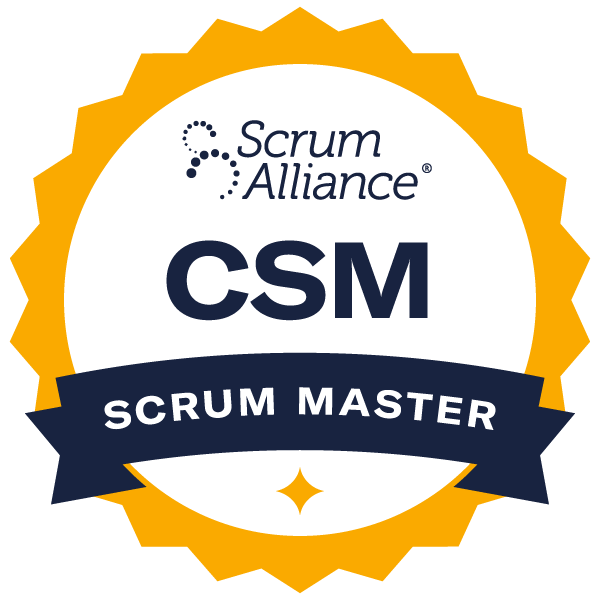Short, five-minute exercises and case studies will be scattered throughout the two-day session. Longer exercises are detailed below. Ample material is available for this session, and while all essential information will be covered, time spent on each topic will vary depending on the composition of the class and the interest in particular areas. A more detailed course outline is available at our website.
Agile Thinking: In order for us to understand the benefits of Scrum and the nuances behind its framework, we begin with the history of agile methods and how relatively new thoughts in software development have brought us to Scrum. “The Art of the Possible” is an opportunity to understand how small changes in behavior can have a large impact on productivity. This also turns our thinking towards new ideas and a willingness to change for the better.
The Scrum Framework: Here we’ll ensure that we’re all working from the same foundational concepts that make up the Scrum Framework. We’ll review the three areas that impact an organization most as we move ahead with Scrum and explain the different Scrum Roles, Artifacts, and Meetings.
Implementation Considerations: Moving beyond Scrum’s foundational concepts, we’ll use this time to dig deeper into the reasons for pursuing Scrum. We’ll also begin a discussion of integrity in the marketplace and how this relates to software quality.
Exercise: Integrity at a fast-food restaurant. During this exercise we’ll review various options regarding an employee faced with a difficult situation. The importance of providing high quality products to our customers will be explored.
Exercise: understanding customer expectations. This exercise is the beginning of an extended exercise involving agile estimating and planning. During this first portion of the exercise, we’ll work with a fictional customer who has a very demanding schedule and understand how our assessment of project work plays a significant role in customer satisfaction.
Exercise: The 59-minute Scrum Simulation. This popular exposure to Scrum asks us to work on a short project that lasts for just 59 minutes! We’ll walk through all of the key steps under the Scrum framework as we work in project teams to deliver a new product.
Scrum Roles: Who are the different players in the Scrum game? We’ll review checklists of role expectations in preparation for further detail later in our session.
The Scrum Team Explored: Since the ScrumMaster is looking to protect the productivity of the team, we must investigate team behaviors so we can be prepared for the various behaviors exhibited by teams of different compositions. We’ll also include small exercises to help participants understand how to handle difficult situations.
Exercise: Agile estimating and planning. Although agile estimating and planning is an art unto itself, the Mike Cohn's concepts behind this method fit very well with the Scrum methodology an agile alternative to traditional estimating and planning. We’ll break into project teams that will work through decomposition and estimation of project work, and then plan out the project through delivery.
The Product Owner: Extracting Value: The driving force behind implementing Scrum is to obtain results, usually measured in terms of return on investment or value. How can we help ensure that we allow for project work to provide the best value for our customers and our organization? We’ll take a look at different factors that impact our ability to maximize returns.
The ScrumMaster Explored: It’s easy to read about the role of the ScrumMaster and gain a better understanding of their responsibilities. The difficulty comes in the actual implementation. Being a ScrumMaster is a hard job, and we’ll talk about the characteristics of a good ScrumMaster that go beyond a simple job description.
References and Advanced Considerations: This section of our material acts a reference for more detailed information regarding Meetings, Artifacts, and Advanced Considerations.
Closing Topics: We’ll wrap up with direction on where to go next with your Scrum experience, some Scrum reference sites, and our graduation ceremony.




 Certified ScrumMaster®
Certified ScrumMaster®

